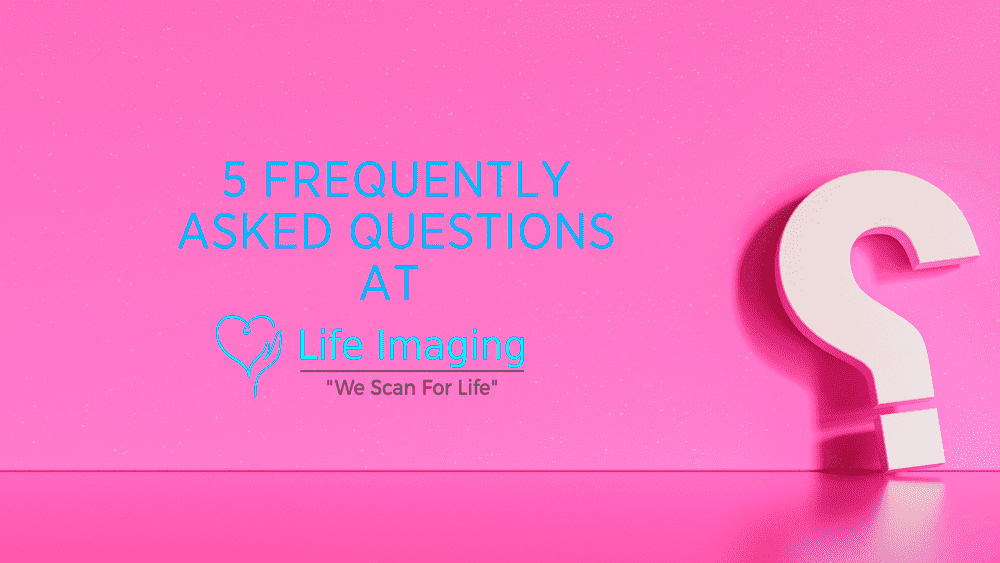Life imaging services are essential for diagnosing and monitoring various health conditions. These services use advanced technologies to capture detailed images of the inside of your body. However, understanding the cost of life imaging can be a bit tricky due to several factors that come into play. The cost can vary based on the type of service, where it's performed, and even the healthcare provider. Knowing what influences these costs can help you make informed decisions when choosing imaging services for your needs.
Factors That Affect Life Imaging Costs

Life imaging costs can fluctuate depending on a variety of factors. Here are the main things that impact how much you’ll pay for an imaging service:
- Type of Imaging: Different imaging techniques like MRIs, CT scans, and ultrasounds come with varying costs due to the technology used and the complexity of the procedure.
- Location: Costs can differ depending on where the service is provided. For example, imaging services in urban areas might be more expensive than in rural locations due to demand and overhead expenses.
- Insurance Coverage: Whether or not you have health insurance—and the type of coverage you have—can significantly affect the cost. Insurance often covers a portion of the expense, leaving you with a smaller bill.
- Provider and Facility: The reputation and location of the medical facility also play a role. Well-established hospitals or specialty centers may charge more than smaller, local clinics.
- Urgency and Complexity: Emergency imaging services, or those requiring special preparation, can cost more. For example, an urgent MRI may cost more than a standard one.
Considering these factors will help you understand why prices vary and how to prepare for any costs involved.
Different Types of Life Imaging Services

There are several types of life imaging services used to capture detailed images of the body. Each imaging technique has its own pricing, based on the technology and process involved. Here's a breakdown of the most common imaging services:
- Magnetic Resonance Imaging (MRI): MRI uses powerful magnets and radio waves to create detailed images of organs and tissues. It is commonly used to detect conditions in the brain, spine, joints, and soft tissues. MRIs tend to be one of the more expensive types of imaging due to the complexity of the technology.
- Computed Tomography (CT) Scan: A CT scan uses X-rays to create detailed cross-sectional images of the body. It's often used for quick diagnosis of internal injuries or conditions. CT scans are generally less expensive than MRIs but still carry a higher cost compared to other imaging methods like X-rays.
- Ultrasound: This method uses sound waves to produce images of the inside of the body, such as the heart, liver, or kidneys. Ultrasound is commonly used in pregnancy monitoring and other non-invasive procedures. It tends to be one of the least expensive imaging methods.
- X-ray: X-ray imaging uses radiation to capture images of the bones and internal organs. It is the most commonly used and one of the least expensive imaging methods. However, it is limited in its ability to capture soft tissues clearly.
- Positron Emission Tomography (PET) Scan: PET scans use radioactive substances to visualize body processes. They're often used in cancer detection and assessing brain function. PET scans can be quite costly due to the radioactive materials and specialized technology involved.
Each imaging technique has its own benefits and costs, so choosing the right one will depend on the condition being assessed and your healthcare provider’s recommendation. Understanding the differences between these methods helps you know what to expect in terms of both procedure and pricing.
How to Choose the Right Life Imaging Service for Your Needs

Choosing the right life imaging service for your needs is essential for getting accurate results at a reasonable cost. With so many options available, it can be overwhelming. Here are some tips to guide your decision-making process:
- Understand the Type of Imaging You Need: Start by knowing what type of imaging is required for your condition. Some issues may be better diagnosed with an MRI, while others might only need an ultrasound. Consult with your doctor to determine the best option.
- Consider Your Budget: Imaging services can vary greatly in cost. It's important to ask about pricing upfront, especially if you don’t have insurance. Check if there are payment plans, or ask about discounts for paying in full.
- Check for Insurance Coverage: If you have health insurance, find out which providers are covered. Sometimes, choosing an in-network facility can significantly reduce your out-of-pocket expenses.
- Look for Accredited Facilities: Ensure the imaging center or hospital is accredited by a recognized body. This ensures they meet certain quality standards and have trained professionals operating the equipment.
- Read Reviews and Get Recommendations: Research reviews and ask for recommendations from friends, family, or your healthcare provider. Hearing about others' experiences can give you confidence in your choice.
By considering these factors, you’ll be able to choose the imaging service that provides the best value without compromising quality.
Cost Breakdown of Popular Life Imaging Services
Understanding the cost breakdown of common life imaging services can help you plan and manage your healthcare expenses. Here's a general overview of what you can expect to pay for different types of imaging:
| Imaging Service | Estimated Cost Range |
|---|---|
| Magnetic Resonance Imaging (MRI) | $400 to $3,500 |
| Computed Tomography (CT) Scan | $270 to $3,000 |
| Ultrasound | $100 to $1,000 |
| X-ray | $50 to $500 |
| Positron Emission Tomography (PET) Scan | $1,000 to $6,000 |
Costs vary depending on location, insurance coverage, and the complexity of the procedure. For example, an MRI on the brain may cost more than a basic scan of a joint. It's important to ask your provider for a detailed cost estimate before proceeding with any imaging service.
Knowing these costs helps you budget and make more informed choices about which services are best suited for your needs.
How to Save on Life Imaging Costs
Life imaging services can be expensive, but there are several ways to save money without sacrificing quality. Here are some practical tips:
- Shop Around: Prices can vary significantly between facilities. Don't hesitate to contact multiple providers to compare pricing. Some hospitals or imaging centers may offer discounts or lower rates for the same service.
- Use Insurance Benefits: If you have insurance, make sure to use in-network providers. This can significantly reduce your costs. Contact your insurance company to confirm which facilities are covered under your plan.
- Negotiate the Price: Many medical providers are open to negotiating prices, especially if you’re paying out-of-pocket. Don’t be afraid to ask if there’s a payment plan or discount available.
- Look for Community Health Centers: Some community health centers or nonprofit organizations offer lower-cost imaging services for people who are uninsured or underinsured. It’s worth looking into these options if you qualify.
- Consider Package Deals: If you need multiple imaging tests, ask if the facility offers bundled pricing for multiple procedures. This can reduce your overall costs compared to paying for each test separately.
By following these strategies, you can reduce the financial burden of life imaging services and still receive the care you need.
Common Misconceptions About Life Imaging Costs
There are many myths and misunderstandings about life imaging costs that can cause unnecessary confusion. It's important to clear up these misconceptions so that you can make more informed decisions. Let's address some of the most common ones:
- Life Imaging Is Always Expensive: Many people assume that life imaging, such as MRIs or CT scans, is always out of their budget. While certain types of imaging can be pricey, there are options that are more affordable, especially if you shop around and compare prices. Discounts and payment plans may also be available.
- Insurance Covers All Imaging Costs: Another common belief is that insurance will cover the full cost of any imaging service. While insurance often covers a significant portion, it doesn’t always cover everything. You may still be left with co-pays, deductibles, or fees for certain types of imaging that are not included under your plan.
- Cheaper Facilities Offer Lower-Quality Imaging: Some people believe that lower-cost imaging centers or hospitals provide subpar services. This is not always true. Many facilities that offer lower prices are just as skilled and equipped as more expensive ones. It’s important to research and ensure the facility is accredited and has a good reputation.
- Costs Are the Same Everywhere: It’s a common myth that life imaging costs are fixed or the same no matter where you go. The truth is, prices can vary greatly depending on factors like location, facility, and the complexity of the procedure. You can often find more affordable options by calling around or looking for deals.
- Life Imaging Costs Are Non-Negotiable: Many people don’t realize that medical bills, including life imaging, can sometimes be negotiated. If you're paying out-of-pocket, don't hesitate to ask for discounts, payment plans, or explore lower-cost options.
Understanding the facts behind life imaging costs can help you make better decisions and avoid being caught off guard by unexpected expenses.
How to Find Affordable Life Imaging Services
Finding affordable life imaging services doesn’t have to be complicated. With a little effort and planning, you can find high-quality imaging at a price that fits your budget. Here are some strategies to help you save money:
- Research Local Imaging Centers: Different centers in your area may offer varying prices for the same service. It’s worth calling several places to inquire about their pricing and any potential discounts they may offer. You might find that one facility offers significantly lower rates than another.
- Check for Insurance Network Providers: If you have insurance, use their network of in-network providers. These providers have agreements with your insurance company, which can reduce your costs. Call your insurance provider or check their website for a list of in-network imaging centers.
- Consider Outpatient Clinics: Outpatient clinics or smaller healthcare facilities often offer more affordable imaging services compared to larger hospitals. These clinics provide similar services, sometimes at a fraction of the cost.
- Ask About Payment Plans: Some imaging centers offer payment plans for people who are uninsured or need assistance paying their bills. Ask about flexible payment options that may allow you to pay in smaller, more manageable installments.
- Look for Special Deals or Promotions: Occasionally, imaging centers or hospitals may offer promotions, such as discounted rates for self-pay patients or bundled services. Keep an eye out for special offers or inquire about discounts for paying upfront.
- Check Community Health Clinics: Some community health centers offer low-cost or sliding-scale fees for imaging services, especially for those without insurance. These clinics can be a great resource if you're looking to save money on diagnostic tests.
By taking the time to explore your options and use the strategies above, you can find affordable life imaging services without compromising on quality.
FAQ About Life Imaging Costs
Many people have questions about life imaging costs, especially since they can vary so much. Here are some frequently asked questions that can help clear up any confusion:
- What factors affect the cost of life imaging?
Factors that influence the cost of life imaging include the type of imaging (MRI, CT scan, ultrasound), the facility’s location, whether you're using insurance, the complexity of the procedure, and the healthcare provider's pricing.
- Does insurance cover life imaging costs?
Insurance often covers a significant portion of life imaging costs, but you may still need to pay a co-pay or deductible. Be sure to check with your insurer to understand what’s covered and what your out-of-pocket costs might be.
- Can I negotiate life imaging prices?
Yes! It’s possible to negotiate prices, especially if you’re paying out-of-pocket. Don’t be afraid to ask for discounts or inquire about payment plans that could make the costs more manageable.
- Are there ways to lower life imaging costs?
Yes, there are several ways to save. Shop around, use in-network providers if you have insurance, ask about discounts, and consider outpatient clinics for more affordable options. You can also look for special promotions or community health centers that offer lower rates.
- Why is life imaging so expensive?
Life imaging can be costly due to the advanced technology involved, the expertise required to operate the machines, and the overhead expenses of medical facilities. However, costs can vary, and there are often ways to find more affordable options.
By understanding the answers to these common questions, you can feel more confident in navigating the costs of life imaging services and making informed decisions.
Conclusion: Making Informed Decisions About Life Imaging Costs
Understanding the costs of life imaging services is crucial for making informed healthcare decisions. Whether you're getting an MRI, CT scan, or ultrasound, it’s important to know what factors influence pricing and how you can manage these costs effectively. By considering aspects like your insurance coverage, the type of imaging you need, and exploring affordable options, you can avoid surprises and find a solution that fits both your health needs and budget. Remember, prices vary from one provider to another, so don’t hesitate to compare costs and ask questions about discounts or payment plans. With the right knowledge and approach, you can make choices that ensure you receive quality care without breaking the bank.

 admin
admin








